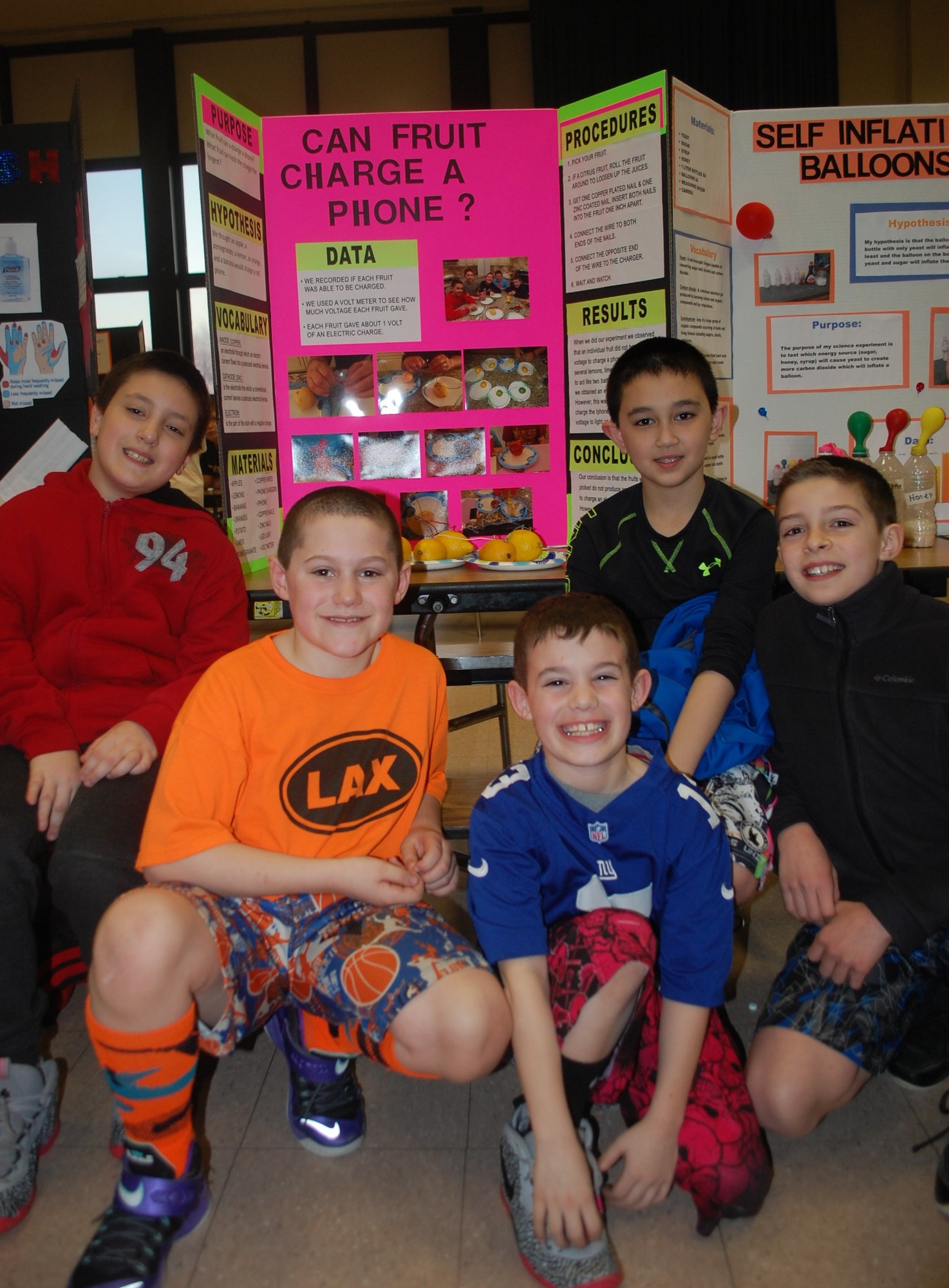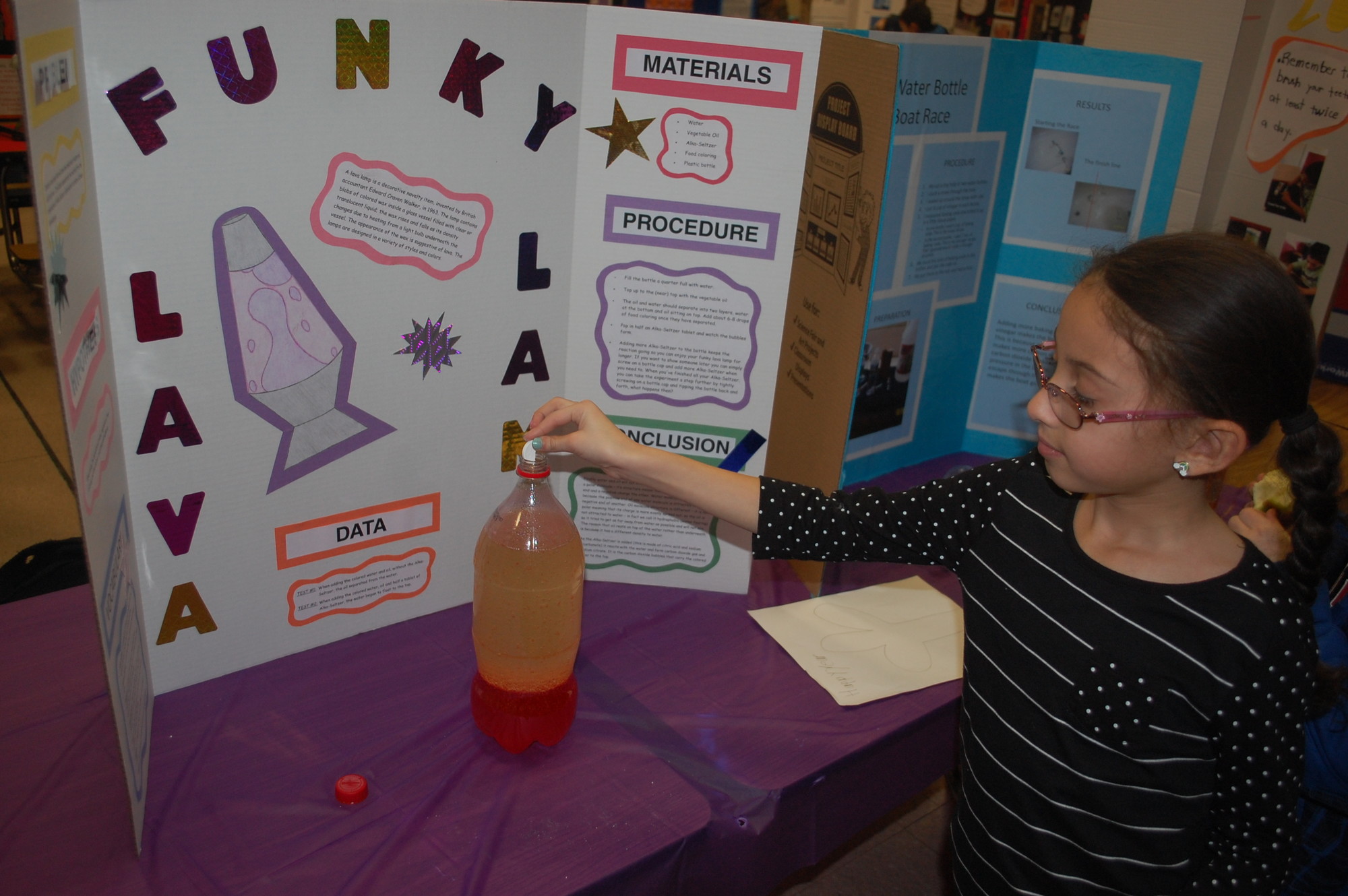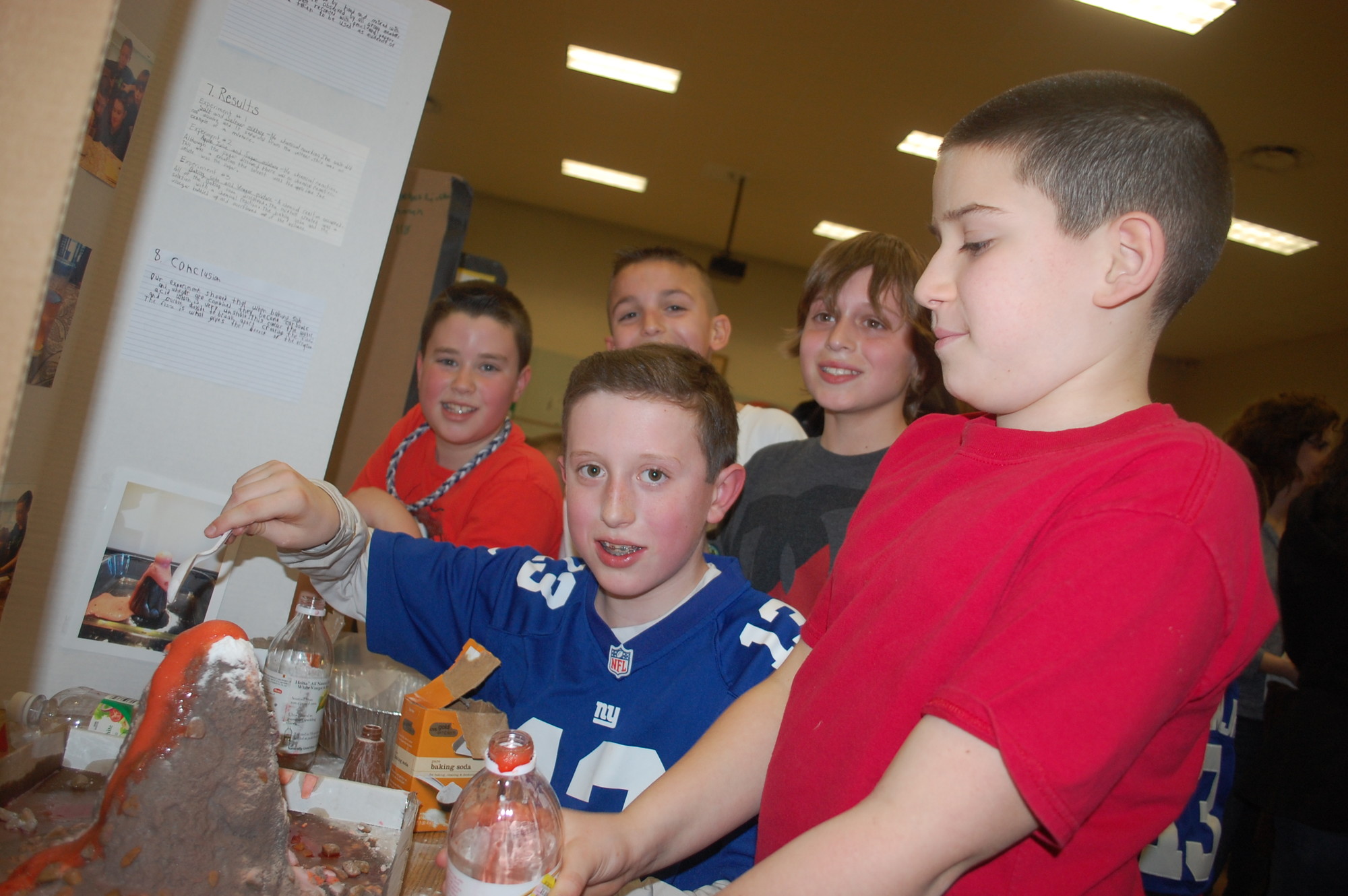A science explosion at East Broadway
Instead of trays of food, the cafeteria tables were covered with science projects at East Broadway School on March 18. The science fair returned from a hiatus of a few years, and energetic Levittown elementary students showed off their hard work to their parents and friends that evening.
There were more than 50 projects on display, representing the work of about 150 students, as many chose to work with siblings or friends. Participation was voluntary and open to any student, including kindergartners.
Principal Jeanmarie Wink walked around the room and stopped by each project. She said she was impressed with the caliber of work, noting her conversation with a 6-year-old about his study of liquid density. “He wouldn’t have learned that in the kindergarten curriculum,” she said.
Students did projects on plants, germs, crystals and more. “I do like the variety,” Wink said. “We do have different things that I haven’t seen before. Of course, the volcano is the favorite.”
There were a few volcanoes, including one built by a fifth-grade team of John Rebaudo, Anthony Coppola, James Hager, Joey Hepse and Ryan Keating. They learned what materials do and do not cause a reaction, and they found out that baking soda and vinegar worked best.
“They wanted to see the eruption,” said Kim Coppola, of Seaford, who attended the science fair along with other parents from the group. “They were very excited to see the reaction.”
The work was done at Keating’s Wantagh house over the course of several weekends. The five boys spent much time gathering data, building and testing their volcano, and taking pictures for the project board.
“They were so eager to do this,” said Shelly Rebaudo, of Wantagh. “It was a challenge and something different.” Noting that the boys all love to play sports, she said it was a nice change of pace to see them get excited about an academic pursuit.
Fourth-graders John Mauro and Anthony Sciotto, both of Wantagh, did a project called “Magentic Train,” creating an electromagnet from batteries, magnets and copper wire. “It’s a good thing to use in the future so you don’t have to waste electricity,” Mauro said.
A fourth-grade team of Ryan Tam, Connor Kalb, Michael Cassano, Joey Forchelli and Luke Neuer also worked with electricity, as they sought to find out if fruit could charge a cell phone. Using a cell phone charger, and copper and zinc nails, they learned it could not. Citrus fruits worked the best, but only provided enough power for a single LED light.
“It did not work because a phone needs more than one volt,” Kalb said. He added that the experiment was fun because it is something he and his friends don’t get to do every day.
Wink said that was the exact purpose of the science fair — giving students a chance to go beyond their lessons in the classroom. “I think they learn things beyond their years,” she said. “They learn about themselves, too.”















